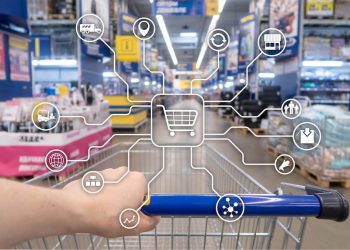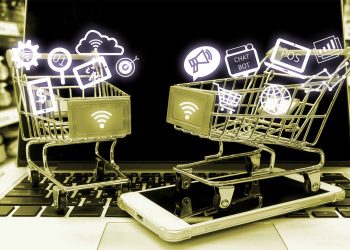Technological improvements are not only overruling the retail business but also replacing traditional solutions such as inventory management and more. However, there are a slew of issues that brick-and-mortar retailers face the most as a result of technology transitions. More significantly, it becomes increasingly difficult for them to manage new systems and guarantee that the needs of both the business and the consumer are met.
It’s more vital than ever for physical retailers to offer impressive in-store advertisements these days. Additionally, creating a tailored client experience and making the brand socially appropriate is necessary.
As a result, it is past time for brick-and-mortar retailers to embrace the current trends that are defining the customer experience. So, let’s talk about how technology is impacting businesses and why you should care about it.
The Future of Brick-and-Mortar Retailers is Data-Driven
You would not want to predict your consumer expectations, especially when you are a business owner.
Here, you can thank technology and the vast amount of client data available on the internet every day for this. This allows you to gain a deeper understanding of their desires. You can, for example, figure out who your target audience is, what they’re looking for, and how they communicate with your business.
For example, you implement CRM software. It will enable you to monitor customer online activities. As a result, you’ll be able to satisfy their needs and tailor customer service accordingly. After all, no matter what technology you use, your customers will undoubtedly desire personal interaction.
Online stores have already started utilizing valuable customer insights. So now it’s up to you to set up your firm so that you can adapt the goods as per the customer preferences.
Ways Technology is Transforming the Future of Brick-and-Mortar Retailers
Easy Queue Management
Waiting is one of the most frustrating aspects of brick-and-mortar shopping. Long wait times may turn a favorable brand reputation into a negative experience, whether you manage a little store or a large corporation.
Here, a digital queuing system comes as the evolving technology that lowers the wait times. It allows mobile check-in, efficient staffing optimization, and comprises appointment scheduling features. Customers can now freely complete other essential chores and browse the store’s other items while waiting in line.
A top queue management system has the capability of gathering details from each transaction. It offers real-time information on customer behavior, peak hours, service durations, and more. Businesses can use this data to analyze client demands and allocate staff effectively. As a result, you’ll be able to provide a more streamlined and praising experience.
 Building Great Brick-and-Mortar Experiences
Building Great Brick-and-Mortar Experiences
Without clear brand messages, brick-and-mortar retailers have little chance of remaining competitive and gaining consumer happiness.
Online purchasing has evolved and will continue to be the competitive norm in the future. In this situation, in-store experiences are essential for companies, particularly for brick-and-mortar retailers looking to physically display their goods.
Providing an uncluttered environment allows clients to explore the goods conveniently. Also, it makes their visit more pleasant.
In-store experiences have become increasingly reliant on tablets, touch screens, and self-service kiosks. All of this can assist physical facilities in encouraging consumer connection and engagement. Some stores have already begun to use tablets to replace their checkout counters.
Streamlined Transactions
There is an overall growth in the integration of digital payment methods, including PayPal, Stripe, Apple Pay, and others. These gateway alternatives can be used by both online and brick-and-mortar retailers.
When it comes to the value of the customer experience, no one loves being forced to finish a purchase with outdated payments. This is why so many retailers have already started embracing payment gateway options. This automates the checkout process and eliminates the need for manual operations.
In general, modern consumers seek payment flexibility. There’s also no reason not to accept digital payments in your store as it’s cutting-edge technology.
Automation for Business Growth
Shoppers nowadays prefer to put in minimal effort and complete their purchases at their leisure. As a result, a growing number of online shops, particularly grocery stores, now provide curbside pickup for online orders.
Amazon, for example, has a chain of stores with no queues or checkout counters. This implies that shoppers may simply go in, load their carts, and leave without interacting with anyone.
The necessity for process automation arises in this situation.
The shopping cart has already been automated in some establishments. Businesses may use their digital wallets to scan barcodes to apply discounts and pay for purchases with a single click. People who already prefer self-checkout benefit from such alternatives including Apple Pay, Amazon Pay, Paypal, and more.
Digital Signage to Keep Visitors Informed
Digital signage boosts in-store interaction and inspires customers to have the best experience possible when they leave the store. When connected with CMS, digital signs allow seamless and speedy upgrades. Also, Digital Signage assists customers with in-store transactions and lets them adjust prices at any moment.
Furthermore, it helps to deliver an engaging physical retail experience, share content on digital screens, and direct them to the appropriate counter.
Summing Up
The primary goal of digitalization in the retail industry is to strengthen customer-business connections. Furthermore, regardless of whether you deploy technology for your customers or to make business processes run smoothly, the product’s success is essential in determining how effectively it performs.
As a result, the sooner you begin integrating cutting-edge technologies into your physical store, the better it will be able to compete in the retail market.








